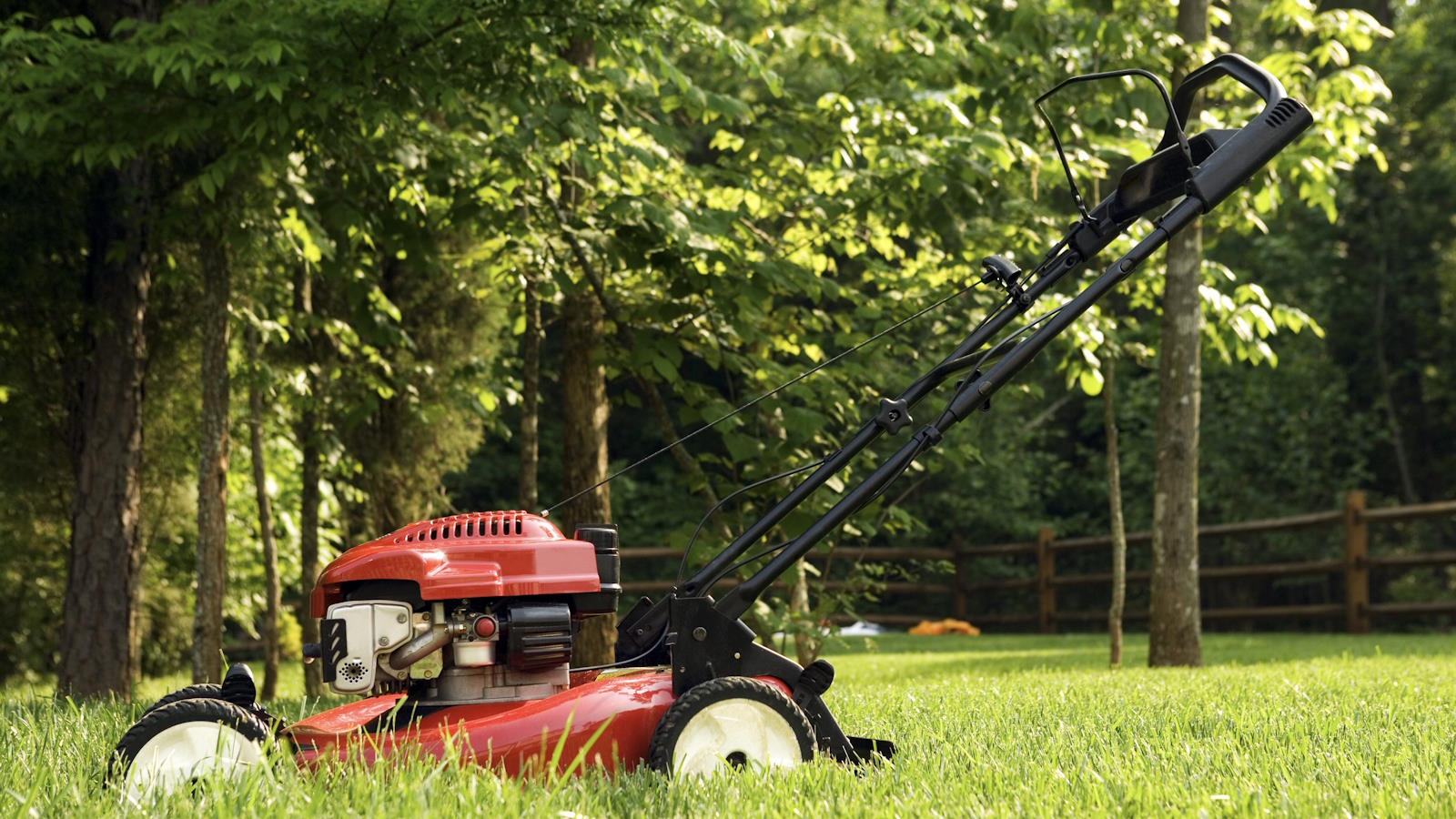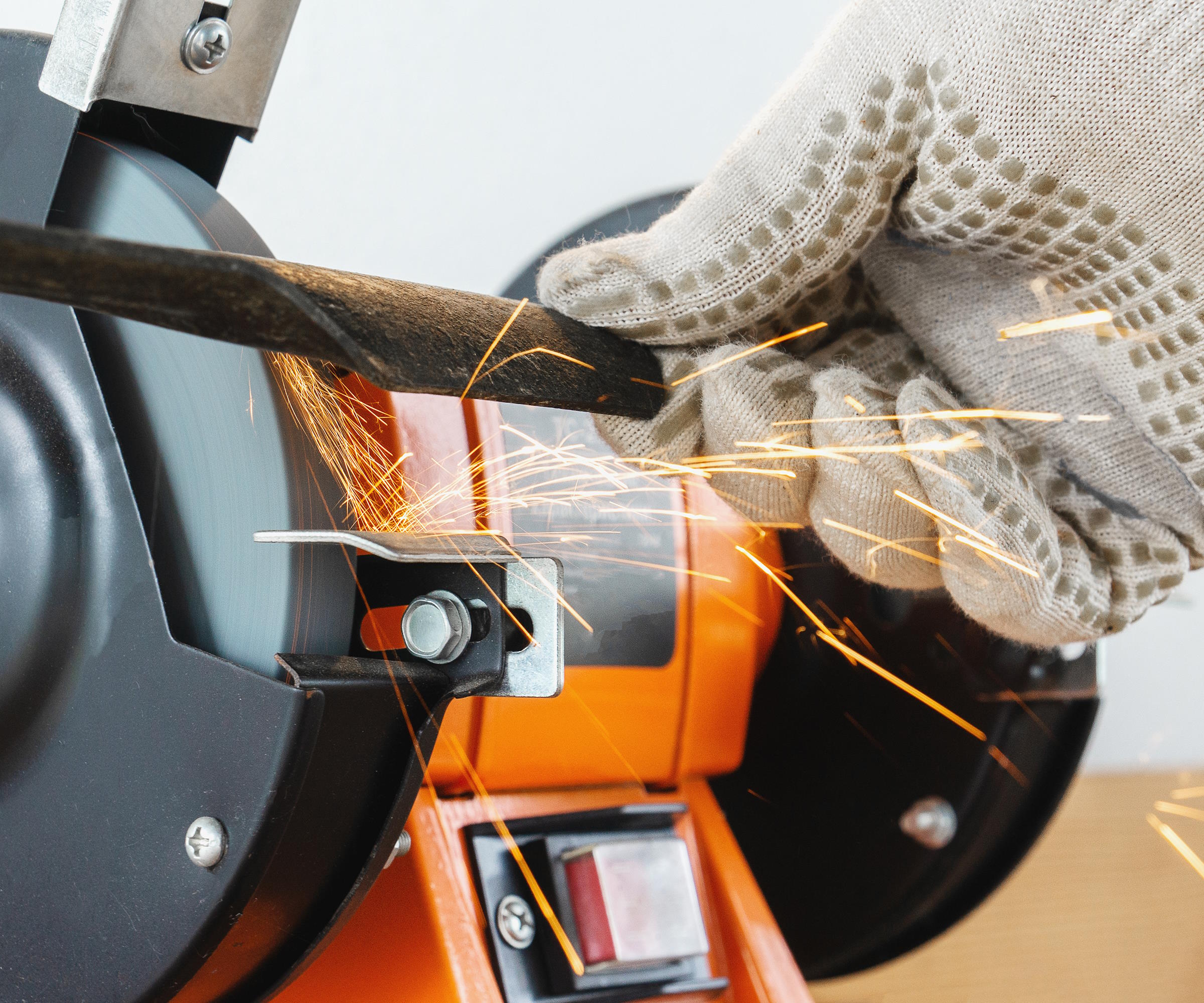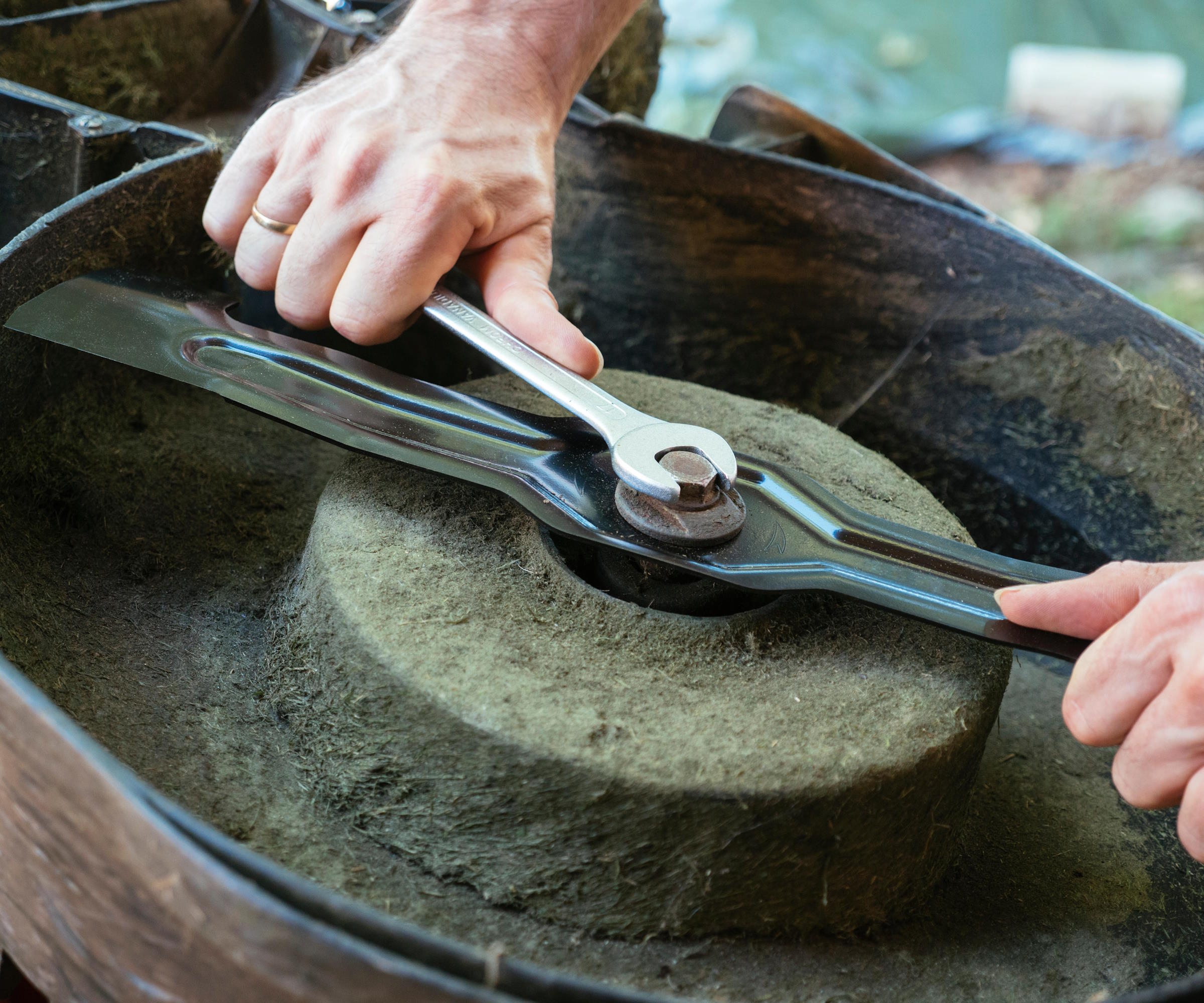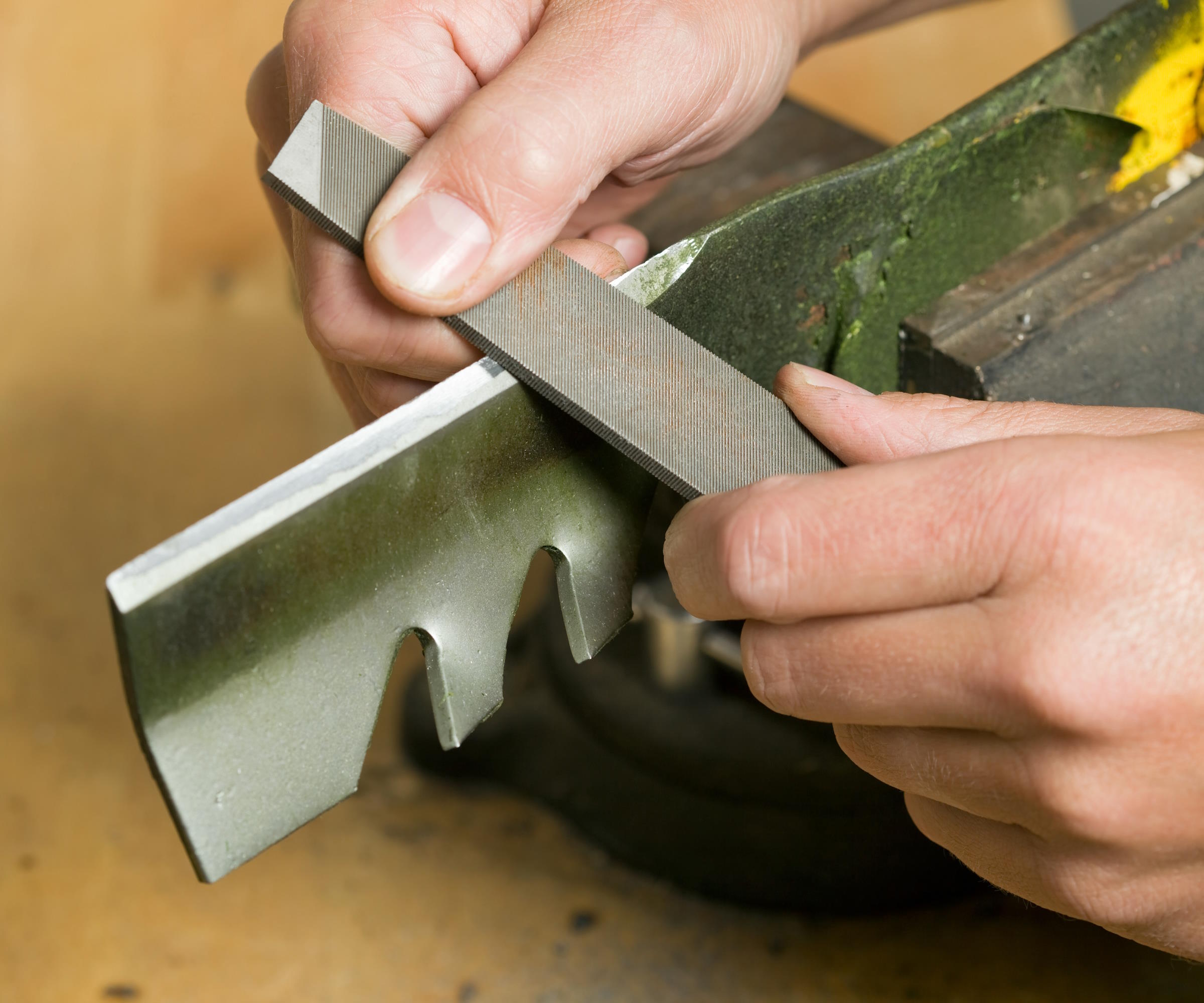How to sharpen lawn mower blades − expert advice for safe sharpening using hand or power tools
Essential, professional advice for how to sharpen lawn mower blades safely at home


Keeping your lawn mower blades sharp should be seen as an important part of any annual lawn care regime. Having sharp blades on your machine means clean cuts, healthier and better-looking lawns, and more efficient mowing overall.
A lawn mower will see a lot of use during the growing season, peaking in the summer months, and it benefits from having its blades regularly sharpened throughout the year. If you spot that your grass tips look frayed or torn after a mow, this may be a sign to sharpen the cutting blades.
There are several ways to sharpen the blades at home, by using either hand tools or power tools. The method you choose may depend on the tools you have, or your confidence and experience with them.
If you want to know how to sharpen lawn mower blades, we take a look at how often they need doing and get advice from experienced lawn care professionals on how to carry out the task.

Lawn mower blades can be sharpened with a grinder
When to sharpen lawn mower blades
How often you need to sharpen lawn mower blades will be dictated by how frequently you mow your lawn, and how large your lawn is. A good rule of thumb is to sharpen the mower blades twice a season, or after 25 hours of usage. If you have a large grass area and are out mowing stripes into your lawn every week, then this time may add up quickly. It can also be worth sharpening the blades when you winterize a lawn mower, so it is ready to go when you start mowing the lawn again in spring.
Small mower blades, such as on a domestic electric lawn mower, can be sharpened at home, however DIY blade sharpening does require confidence with tools and a good attention to detail. The alternative is to use a professional service.

It is best to remove the lawn mower blade to sharpen it
Best way to sharpen lawn mower blades
Lawn mower blades can be sharpened in a few different ways, including with a metal file, a drill-powered blade sharpener, an angle grinder, or a bench grinder. For all methods it is best that the blade is removed from the lawn mower and, for most of them, it must be secured in place using a vice.
David Parker, the owner of Reliable Lawn Maintenance Macon in Georgia, advises six key steps for how to sharpen mower blades at home - and has some important advice to put safety first when completing the task.
- Before you begin, disconnect the spark plug to ensure the mower won't accidentally start. Wear safety gloves and eye protection.
- Use a wrench to remove the mower blade. Note the orientation of the blade to reinstall it correctly.
- Secure the blade in a vice or with a block of wood to prevent movement during sharpening.
- Use a metal file or an angle grinder with a sharpening attachment to sharpen the cutting edge. Follow the original angle of the blade, and maintain a consistent bevel.
- After sharpening, check the balance of the blade. If one side feels heavier, continue sharpening until the blade is balanced.
- Carefully reinstall the sharpened blade, ensuring it is correctly oriented.

David Parker is the owner of Reliable Lawn Maintenance Macon, which offers lawn maintenance services to homeowners in Macon, Georgia.

A lawn mower should be maintained regularly to keep it in top condition
How to sharpen lawn mower blades by hand
To sharpen the blades with a metal file, clamp it in the vice with one cutting edge facing upwards. Ryan Farley, the CEO of LawnStarter, recommends to ‘use a 10-inch file or grindstone’.
He adds: ‘Hold the file at a 45-degree angle and start from the top of the blade. Push down in one direction, place the file at the starting point, and repeat. Don't slide the file back and forth.’
A clean and sharp 10-inch file, like this one on Amazon, should be capable of sharpening a typical domestic lawn mower blade within 50 strokes. The level of sharpness you are aiming for is ‘butter knife’ sharp.
To check the blades are balanced, either use a blade balancer, also available at Amazon, or use a nail, screwdriver or broom handle as a pivot. It is vital to make sure the balance is correct, as if you start cutting the lawn again with an unbalanced blade then it can cause damage to a mower. The blade can then be reattached to the mower, making sure it is the correct way up.

Ryan Farley is the CEO of LawnStarter, a lawn care service founded in 2013 and based in Austin, Texas.

A file can be the simplest way to sharpen a lawn mower blade
How to sharpen lawn mower blades with a grinder
When it comes to using power tools with a sharpening attachment, make sure the blade is securely clamped in place and you have the right protective equipment on.
Align your tool with the angle of the blade and keep this angle consistent as you move the grinding disc along the length of the mower blade. You only need light pressure against the blade and it is likely only a few passes will be required to get the sharpness akin to that of a butter knife. You do not want to make too many strokes and get it razor sharp, as this makes the blade more likely to easily chip during use. Repeat this process on both edges of the blade.
Jeremy Yamaguchi, the CEO of Lawn Love, however, claims a bench grinder is ‘the quickest and most effective way to sharpen lawnmower blades’.
This may be a job too advanced for many DIY blade sharpeners though, as he adds: ‘As this involves handling dangerous tools and creates sparks, you have to be really careful - and I would recommend having an experienced person do it if you aren’t comfortable using the bench grinder.’
After sharpening blades with a grinder, check the balance as explained earlier before putting blades back on the lawn mower.

As the CEO of Lawn Love, Jeremy Yamaguchi helps homeowners find quality, reliable lawn care. Specializing in technology and using industry experience, he intends to revolutionize the lawn care industry.
FAQs
Can you sharpen lawn mower blades without taking them off?
It is possible to sharpen lawn mower blades without removing them, however it will make the task tricky and it is always recommended to remove and secure the blade.
When it comes to how to sharpen lawn mower blades without removing them, you would need to use a block to stop the blades moving and also ensure the mower is properly supported on its side. Then you can grind the top face of the blade in situ - the side that faces the mower’s engine. You will need to go slowly and work carefully, as you will not be able to check the balance afterwards.
Is it worth sharpening lawn mower blades?
It is always beneficial to keep lawn mower blades sharp, for the overall health of your lawn. Sharp blades will ensure your mower cuts cleanly through the grass, rather than hacking and ripping at it - which can lead to poor health, an increased risk of disease, and eventual bare patches in the grass.
A mower with sharp blades also uses less fuel and can have a longer lifespan. Not keeping your mower blades in top condition would be a lawn care mistake that can affect the grass and the machine.
Sharp blades and proper mower maintenance is only one small part of keeping a lawn healthy. A regular lawn maintenance regime should include tasks such as aeration, scarifying, overseeding, and feeding. These will all combine to help make a lawn green and thick for you and your family to enjoy.
Sign up to the Homes & Gardens newsletter
Design expertise in your inbox – from inspiring decorating ideas and beautiful celebrity homes to practical gardening advice and shopping round-ups.

Drew’s passion for gardening started with growing vegetables and salad in raised beds in a small urban terrace garden. He has worked as a professional gardener in historic gardens and specialises in growing vegetables, fruit, herbs, and cut flowers as a kitchen gardener. That passion for growing extends to being an allotmenteer, garden blogger, and producing how-to gardening guides for websites. Drew was shortlisted for the New Talent of the Year award at the 2023 Garden Media Guild Awards.
-
 Orange and green is the bold color pairing quietly transforming homes in 2025 – here's 4 reasons why
Orange and green is the bold color pairing quietly transforming homes in 2025 – here's 4 reasons whyInterior designers are making the orange and green combination work wonders – this is how you can too
By Sophia Pouget de St Victor Published
-
 This Michelle-Pfeiffer-approved chair is made of a forebodingly unusual material, opening the debate: Is it a rustic stunner, or a danger to sitters?
This Michelle-Pfeiffer-approved chair is made of a forebodingly unusual material, opening the debate: Is it a rustic stunner, or a danger to sitters?The actress took to Instagram with a chair made of a controversially sharp material – and fans are unsure of how they feel about it
By Sophie Edwards Published